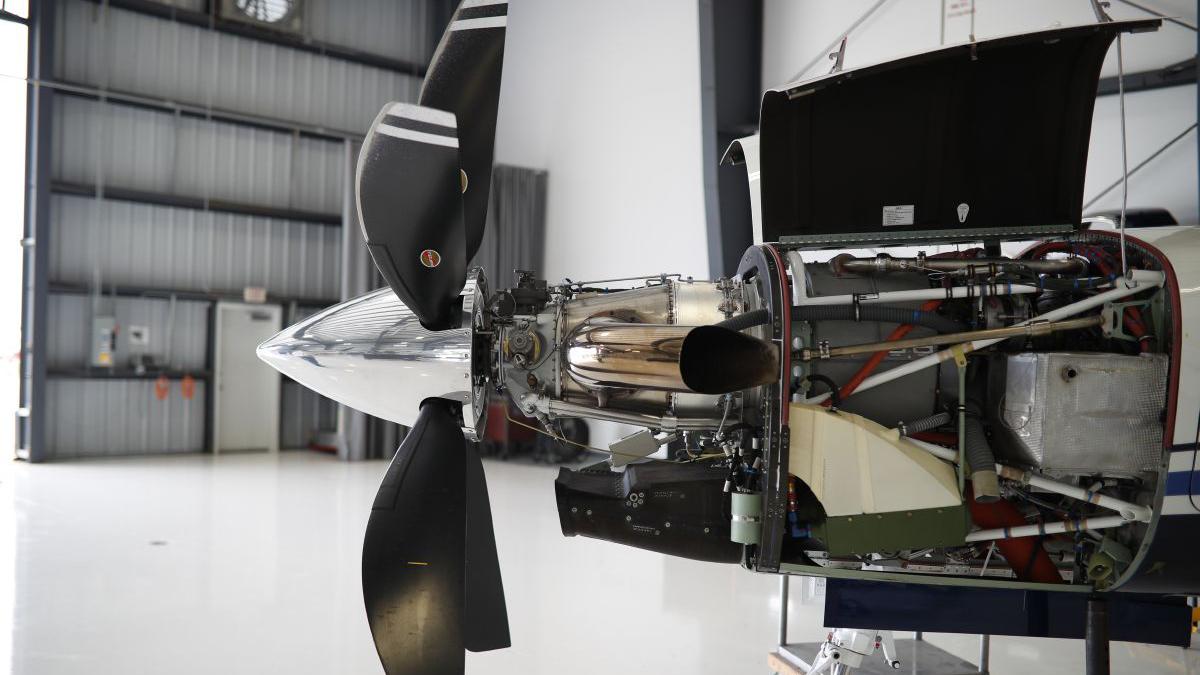Turboprop Engine Market Boosted by Hybrid Innovations and Global Sustainability Aviation Initiatives

The global turboprop engine market is experiencing a significant transformation, driven by advancements in aviation technology, regional air mobility demands, and environmental concerns. Turboprop engines, known for their fuel efficiency and effectiveness in short to medium-haul flights, remain a vital segment of the aerospace propulsion industry. As airlines and defense organizations seek reliable and economical propulsion systems, the demand for turboprop engines continues to rise.
Market Overview
Turboprop engines combine the reliability of jet engines with the efficiency of propellers, making them ideal for small to medium-sized aircraft operating at lower altitudes and speeds. They are widely used in commercial aviation, military aircraft, cargo transportation, and business aviation. Over the past decade, the market has witnessed steady growth, primarily fueled by rising regional air travel, military modernization programs, and the expansion of air cargo services.
Key Drivers of Growth
-
Regional Air Mobility (RAM)
The growing need for connectivity between small cities and rural regions has led to increased investment in regional aircraft. Turboprop-powered aircraft are well-suited for these operations due to their ability to take off and land on shorter runways, lower operating costs, and enhanced fuel economy. Regional carriers around the world are integrating turboprop fleets to serve underserved areas. -
Fuel Efficiency and Environmental Sustainability
Compared to jet engines, turboprops consume less fuel over shorter distances, making them a preferred option in light of global efforts to reduce carbon emissions in aviation. This environmental edge aligns with aviation industry goals to meet stricter emissions targets by 2050. -
Military Applications and Upgrades
Several armed forces worldwide rely on turboprop-powered transport and surveillance aircraft. Modernization programs involving aircraft like the Lockheed C-130 Hercules and new-generation trainers such as the T-6 Texan II continue to support market demand. Additionally, defense budgets in regions like Asia-Pacific and the Middle East are increasing, supporting growth in military turboprop procurement. -
Advancements in Engine Technology
Engine manufacturers are investing in research and development to produce next-generation turboprops with lower emissions, enhanced performance, and digital control systems. Innovations in composite materials, noise reduction, and predictive maintenance systems are making these engines more attractive to operators.
Market Challenges
Despite growth opportunities, the market also faces certain challenges. High development and certification costs for new engines, regulatory complexities, and competition from turbofan and electric propulsion systems can affect the overall expansion. Additionally, the long life cycles of aircraft engines can limit the frequency of replacements, slowing down recurring sales.
Regional Analysis
-
North America continues to be a major player, driven by strong military investments and a mature commercial aviation sector. The U.S. Air Force and Navy operate a significant number of turboprop aircraft.
-
Europe is showing interest in sustainable aviation initiatives, with governments and aerospace firms exploring turboprop-based electric hybrid models.
-
Asia-Pacific is emerging as a high-growth region due to its expanding regional airline industry and rising defense spending, particularly in India, China, and Southeast Asia.
-
Latin America and Africa offer untapped potential, where turboprop aircraft are ideally suited for difficult terrains and limited airport infrastructure.
Competitive Landscape
Key players in the market include Pratt & Whitney, GE Aerospace, Rolls-Royce, Honeywell Aerospace, and Safran. These companies focus on strategic partnerships, engine upgrades, and expanding aftermarket services to maintain competitive advantages. For instance, Pratt & Whitney’s PT6 engine family remains one of the most trusted and widely used turboprop engines globally, with over 400 million flight hours.
Future Outlook
Looking forward, the turboprop engine market is expected to witness moderate to strong growth, supported by the surge in short-haul flight demand, military modernization, and the development of hybrid-electric propulsion technologies. As aviation evolves, turboprop engines are likely to remain relevant by adapting to environmental standards and embracing digital transformation.
The integration of AI-based diagnostics and performance optimization tools will further reduce operational costs and improve safety. With ongoing innovation and regional connectivity initiatives, the market is poised for continued relevance well into the next decade.
- Art
- Causes
- Crafts
- Dance
- Drinks
- Film
- Fitness
- Food
- Games
- Gardening
- Health
- Home
- Literature
- Music
- Networking
- Other
- Party
- Religion
- Shopping
- Sports
- Theater
- Wellness


